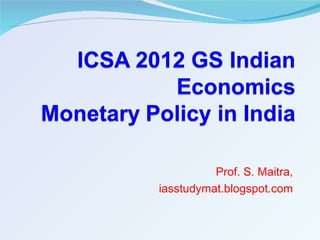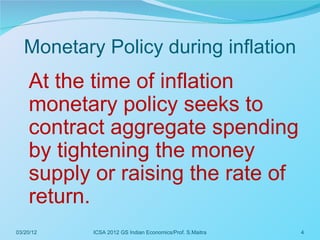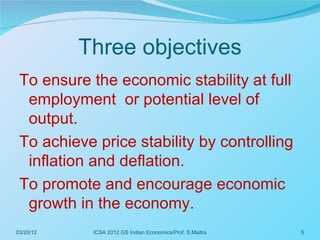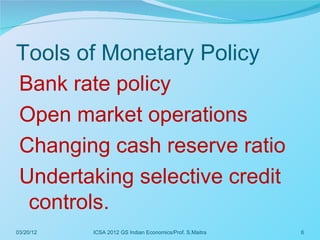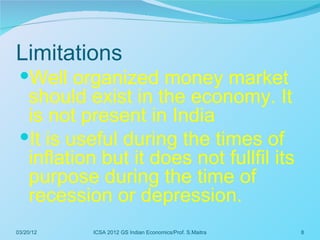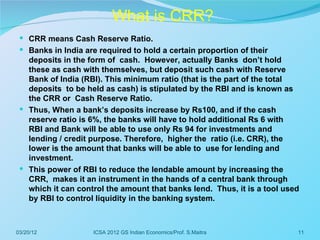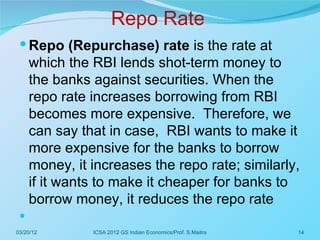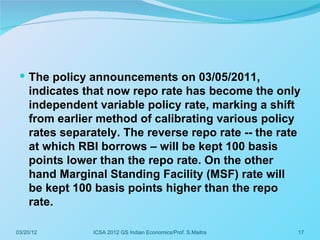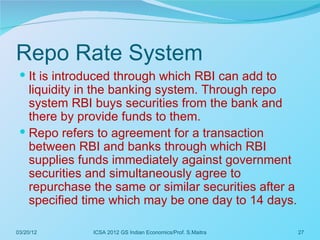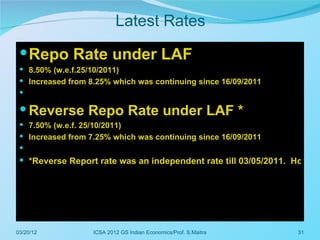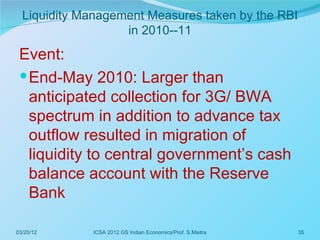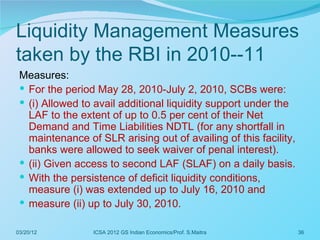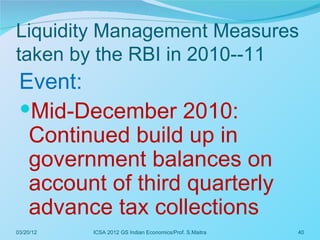Monetary policy refers to actions taken by central banks to affect monetary conditions and financial variables to promote economic goals. It uses tools like open market operations, reserve requirements, and interest rates to influence the money supply and cost of credit. During recessions, monetary policy aims to stimulate demand by increasing money supply and lowering rates. During inflation, it aims to reduce spending by tightening money supply or raising rates. The objectives are economic stability, price stability, and growth.
